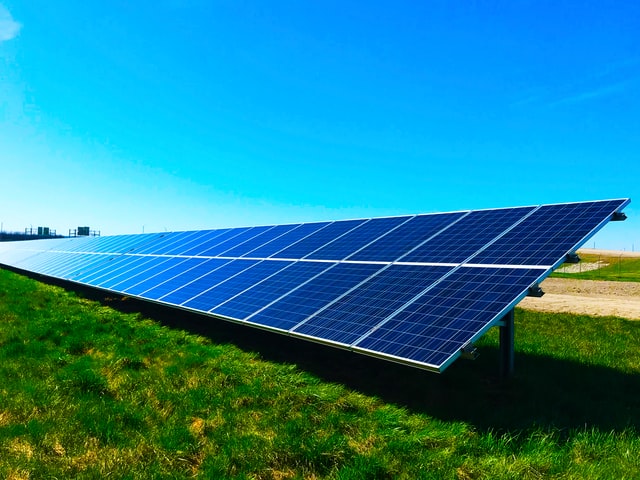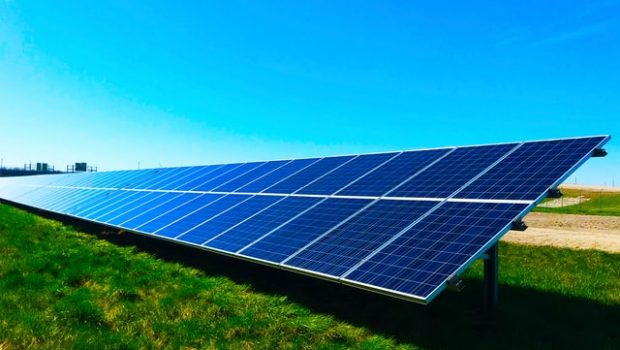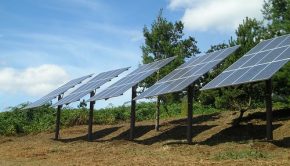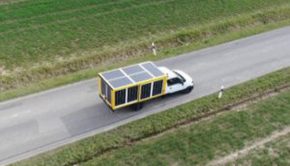A crash course in solar energy interconnection basics for real estate property developers –
A crash course in solar energy interconnection basics for real estate property developers –
The clock is ticking for real estate property developers if they want to invest in solar energy for residential and commercial properties. Due to Investment Tax Credit (ITC) reduction, property developers need a crash course in interconnecting solar energy at all levels of the electric grid because electrical interconnection complexity increases with solar project size and location.
Commercial property developers can incorporate carbon-free or “net-zero” goal considerations in community development. The gap in solar energy interconnection feasibility studies should not deter property developers from acting now before the expiration of tax incentives.
Solar property development
The property site selection process should now include solar energy potential, such as recommended acres for a solar project (e.g., for transmission connected solar, a grid operator recommends 6 acres per MW), and how many solar hours in a year (e.g., Minnesota has approx.. 1200 hours compared to California’s 1600 hours).
If 10 kWh of energy is possible for each square foot, then in an acre, which is 43,560 square feet, 433,560 kWh is technically possible. But the entire area might not be technically feasible. If we discount 50% of the roof space for HVAC, shading, and other factors, we end up with 217,800 kWh potential solar energy. In a place like Minnesota with 1200 solar hours for this hypothetical example, the project size ends up as 181 kW. Because the project size is less than 250 kW, it is a smaller distribution generation project in electric utility terminology.
By the end of 2022, the investment tax credits are expiring for residential customers and reducing to 10% for commercial entities. This tax incentive expiration translates into urgency for both new property and existing developments. Some constraints like Home Owners Association (HOA) not allowing solar, not everyone knowing about carports, and thinking about future energy needs from electric vehicle charging continue to exist.
Grid connection basics
First and foremost, property developers need to know the difference between the distribution grid and the transmission grid. In the distribution system, lower voltages such as 34.5 kV are on the primary side, and voltage classes such as 120 V (residential) are on the secondary side—this primary and secondary voltage variation in the distribution system matters for a solar interconnection size. A 5-kW solar project can hook up to the residential system at 120 V, but not a 250-kW solar system. Solar systems with capacities above 250 kW are interconnected at distribution substations and feeders that require transformers to transfer that energy to the energy highway.
Second, at the high-voltage transmission grid level, where 100-MW utility-scale solar projects are interconnected, the voltage is 69 kV – 138 kV (sub-transmission) and even higher 230 kV – 765 kV (transmission). Higher voltage, higher energy ratings, and longer transmission line lengths enable the transfer of solar energy. For the property owner, large acreages of land translate into larger solar project (tens of MWs) sizes, which determine whether distribution or transmission interconnection rules apply.
And finally, large grid interconnection studies are not cheap or fast. These studies are akin to taking a token when you enter a Driver’s License office and waiting for your number, i.e., study result. But this waiting is worth it in premium energy markets such as California, New York, Massachusetts, and Texas, where the energy prices are higher than places like Minnesota, Nevada, or Dakotas.
Rooftop solar including carports
Residential property developers must deal with both technical and commercial oriented customers. A technically-oriented residential solar owner is typically concerned about metrics such as solar radiation in kWh per square meter per day (kWh/m2/day), inverter efficiency (inverters convert that direct current to alternating current), DC to AC ratio, average retail electricity in $ per kWh, and capacity factor (how much average capacity to expect against the nameplate capacity). A more commercially-oriented solar owner cares about payback time, and if the utility provides net metering – do they make any money by selling the excess solar energy back to the grid?
For a multi-apartment dwelling and commercial building owner, reducing their tenant’s utility bill is most likely the least concern. But with increased awareness of solar energy and climate change, property owners must figure out how to appeal to changing customer preferences. The “what’s in it for me” for the property owner is the reduction in commercial taxes due to solar energy investment.
Community Solar
If residential solar and utility-scale solar are the bookends, then community solar is in the middle. Community Solar Gardens (CSGs) are popular in a state like Minnesota because not everyone has roof space or is ready to buy a system outright. Community solar also has that “community” feeling of bringing together like-minded individuals for the common good in society. Additionally, cities and other commercial establishments can buy shares in these CSGs to meet their carbon-free or “net-zero” goals. Property developers need to know that most CSGs are distribution interconnections, but some may lead to a sub-transmission interconnection.
Most states are in the process of “grid modernization” utility proceedings, which is standardizing solar interconnection rules. Property owners are mostly dealing with distribution utilities at a CSG level.
Utility-scale Solar
If large land parcels are available in their real-estate portfolio, property developers are in a whole new league by themselves. They are dealing with the transmission utility and spending much time and capital understanding the role of feasibility studies. The matchmaking process of a utility that has capacity needs on the horizon to a developer who has available land takes a couple of years at a minimum. Typically, utility integrated resource plans trigger the RFPs for solar projects. This increasing trend is partly due to coal and other fossil unit retirements. Even nuclear plants are retiring due to shifting economic conditions favorable to renewables.
For utility-scale solar projects, property owners need to understand the role of utility regulatory commissions and grid managers. In premium energy markets, project developers must submit the token and sit in the “interconnection queue” for more than 500 days.









